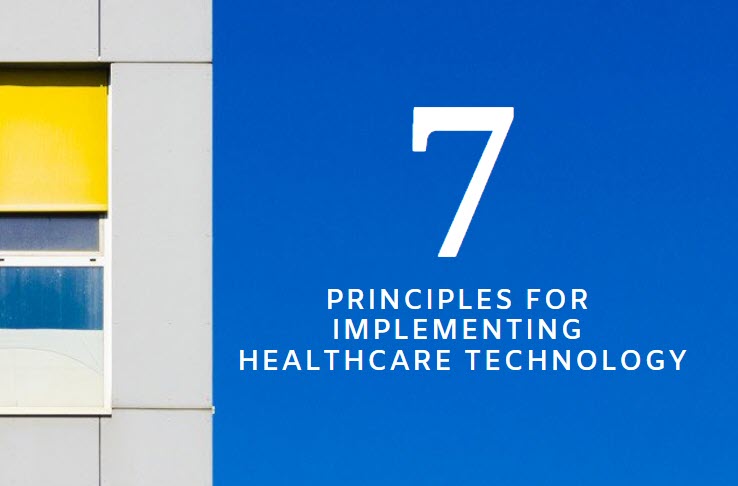In today’s healthcare environment, technology is a critical component that enhances the quality of care by connecting doctors, nurses, and other medical professionals with patients and visitors in varied and often complex ways.
Vantage’s broad-based experience in healthcare technology brings valuable insights into technology advancements, integration best practices, and how to incorporate the right technologies into a healthcare facility more efficiently and cost-effectively.
To support these goals and requirements, we use the following 7 principles to guide our recommendations for Day One and future technology systems:
1. Integrated Technology Systems
Systems in a new hospital should evolve towards an integrated approach where they share a common infrastructure, cabling system, and network transport.
2. Ease of Access
End-user technologies – for example mobile devices, touch-sensitive displays and voice recognition – can be integrated with staff workflow to provide convenient and efficient access to information. Use of standardized interfaces with a common “look and feel” and minimal log-on/authentication methods encourage rapid acceptance of systems.
3. Flexible and Easy-to-Manage
With the increasing complexity of technology systems comes the need to manage them. A Hospital’s Day One and future technology systems should be flexible and easy to install and manage.
4. Fault Tolerant Systems
As a new Hospital becomes more reliant upon its technology systems to support patient care, the systems must be increasingly reliable. A new Hospital’s technology infrastructure that incorporates self-healing systems to predict failures and notify the appropriate staff and/or route around system outages will be needed to provide the desired levels of reliability. As a new Hospital’s Day One standard, “Plan B’s” should be developed for each technology system so that there are clear alternative systems or procedures in place for staff to utilize in the event of a technology system failure.
5. Integrated into the Building Architecture
Environments must be conducive to healing. Implementation of all technology systems should be closely coordinated with the architecture and working practices to minimize the impact of these systems while optimizing their availability and utility.
6. Implemented Prior to Move-in
Wherever possible, the technology systems planned for a new Hospital on Day One should have been implemented elsewhere within the Hospital, either as pilot projects or full implementations, or at another healthcare organization to allow leadership to review the implementations and for staff to gain familiarity with the systems and validate that they provide the features and functions desired.
7. Coordinated with the Rest of the Enterprise
The technology systems for a new Hospital cannot exist in isolation; they must function in concert with the systems in the other Hospital System clinical and administrative buildings and facilities.
Our healthcare thought leaders, Principal Phil Crompton and Associate Alexis Diamond, contributed to this post.


